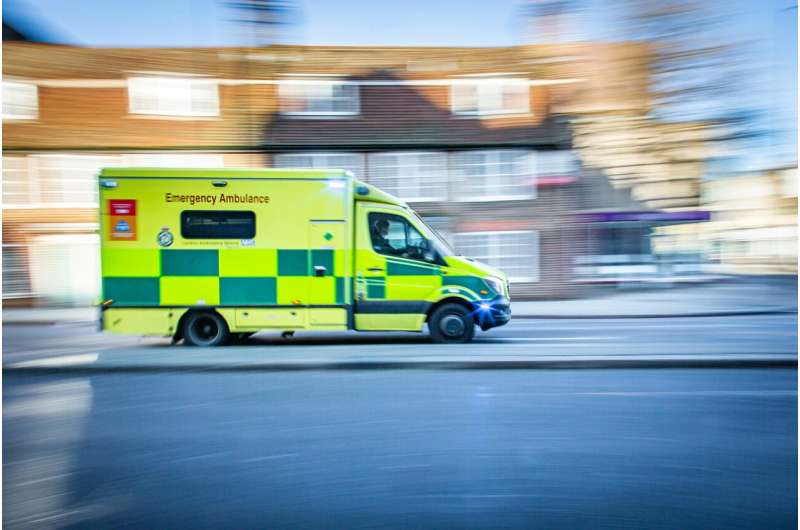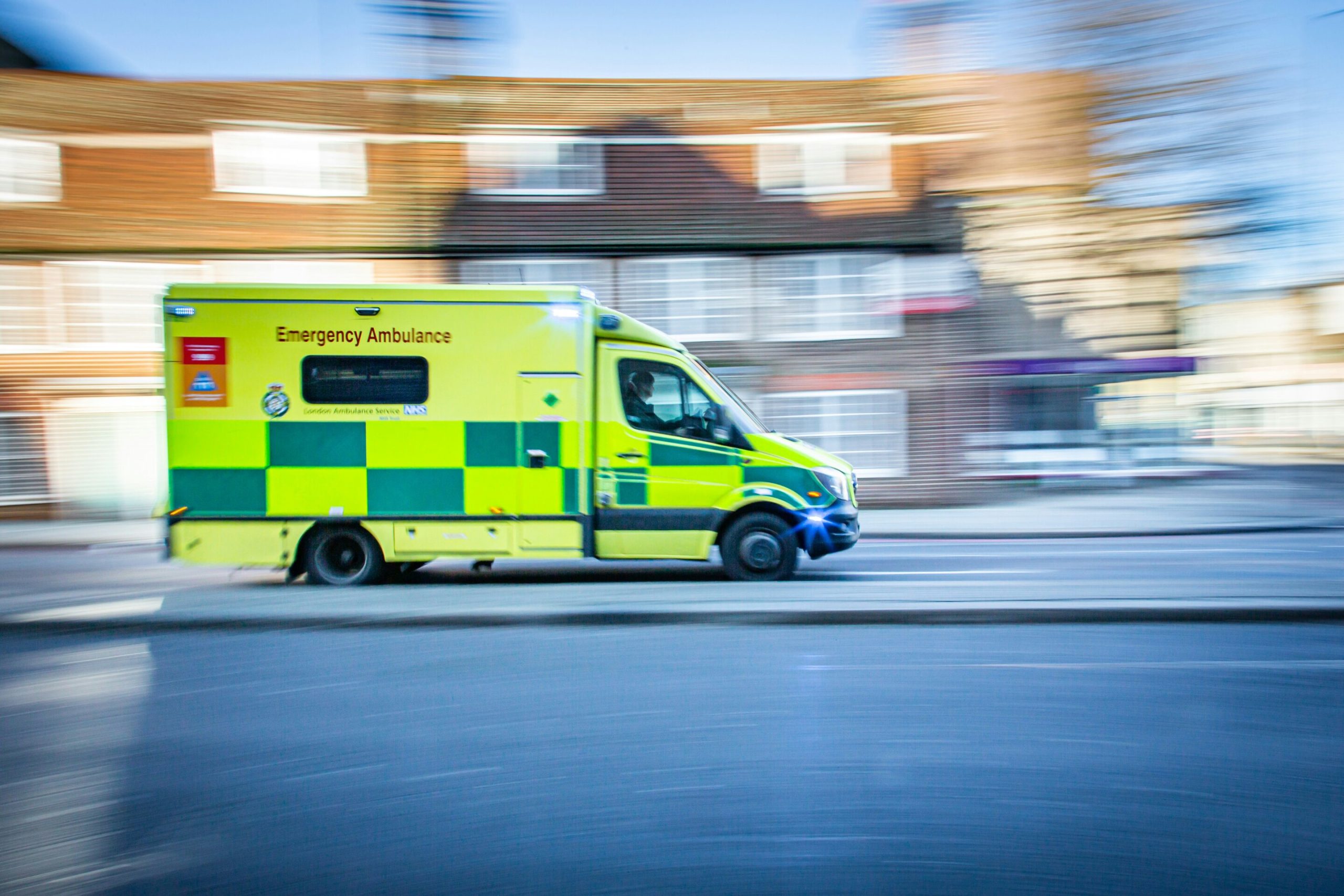
Severely injured children who are brought to an emergency medical department by their parents or caregivers are often not seen as quickly as those who arrive at hospital via ambulance, according to findings presented at the European Emergency Medicine Congress.
The study’s researchers identified three key trauma features that should prompt doctors to review these patients immediately and potentially prioritize their treatment: boggy swelling to the head, abdominal bruising, and thigh swelling or deformity.
The study was carried out in an inner-city level 1 major trauma center, the Bristol Royal Hospital for Children, Bristol, UK, and show that children brought in by caregivers were seen by emergency doctors within an average time of 58.5 minutes, ranging from three to 168 minutes.
Dr. Robert Hirst, who led the study, believes the findings could be applicable to other centers that have similar pre-hospital and urgent and emergency care systems, especially as little is known generally about this group of patients.
Dr. Hirst, who is an emergency medicine registrar at the hospital, told the Congress, “We see many injured children brought to the pediatric emergency department each year. Most are transported by ambulance, which results in pre-hospital emergency services pre-alerting the emergency department to their arrival.
“This leads to early trauma team activation, resulting in specialist services and resources being ready and prepared to see these patients as soon as they arrive. This has been shown to be associated with better outcomes for children with significant injuries.
“However, we know there is a group of children who are brought by their caregivers who do not receive this rapid activation of resources. This can lead to delays in the appropriate level of care being provided. We wanted to find out more about these patients, their ages, the types of injuries they present with, and what happens to them. At present, little is known about this particular group of patients.”
A level 1 major trauma center is an emergency medical center that treats injuries that are so severe they are life-altering with a risk of death or disability, and which need immediate medical attention. Injuries can include fractures and head injuries.
Dr. Hirst and colleagues looked at children aged younger than 16 years who were brought to the emergency department between 5 August 2020 and 6 May 2022 by caregivers, without activation of pre-hospital emergency services.
During this time, 153 children with major traumas arrived; 24 of them had injuries significant enough to be added to the national Trauma Audit and Research Network (TARN) database and were included in the study.
None of them received trauma team activation. All the patients still received appropriate care for their injuries, and none suffered any detrimental effects from being brought to the children’s emergency department by their parents or caregivers, rather than by ambulance.
The average age of the children was just over six years, and 18 (75%) were boys. Nearly all of them (23, 95.8%) had injuries to one part of their bodies, and most (22, 92%) had obvious external evidence of injury. The majority (13, 54%) had head injuries, eight (33%) had injuries to their arms or legs, and three (12.5%) had intra-abdominal injuries.
The median Injury Severity Score (a scale that measures and categorizes injuries to different areas of the body) was 9, and six patients (25%) scored over 15, meaning these were injuries significant enough to be classified as major trauma. Ten (42%) of children required surgery, with seven requiring surgery for a broken thigh bone, and three needing neurosurgery to evacuate blood from swellings around the brain or to correct skull fractures. No children died.
The injuries resulted from falls (12, 50%), sporting injuries (6, 25%), bicycle injuries (2, 8%), being dropped (1, 4%), or were unexplained (3, 12.5%).
Dr. Hirst said, “As always with all pediatric injuries, it is important to be aware of the possibility of non-accidental injury. Concerns for non-accidental injury were confirmed in three of our patients, all under the age of one. Consideration of non-accidental injury, robust safeguarding processes, and regular multidisciplinary governance review is vital to safeguard children attending the emergency department.
“The most important issue highlighted in our study is a group of severely injured children facing delays to be seen by expert emergency doctors. If emergency departments adopted triage alerts for the three major signs identified by this study—boggy swelling of the head, abdominal bruising, and thigh swelling or deformity—this could prompt an urgent senior clinician review.
“This could improve management of this particular group of children by triggering trauma teams and appropriate allocation of resources for this high-risk population.”
Dr. Hirst and his colleagues are improving processes in their department so that injured children with external evidence of injury are reviewed promptly by a senior clinical decision-maker.
“We will reassess the impact of these changes on our key performance indicators and outcomes for these children,” he concluded.
Dr. Barbra Backus is chair of the EUSEM abstract selection committee. She is an emergency physician in Rotterdam, The Netherlands, and was not involved with the research.
She said, “If pre-hospital emergency services have not been activated for a severely injured child, then it’s possible that the caregiver or emergency department medical staff may not recognize the severity of the injury immediately. This is why adoption of triage alerts for the three key features identified in this study could make a significant difference to how quickly these patients are reviewed by a senior clinician and, potentially, to their outcomes.
“Although health systems and procedures for dealing with pediatric patients who arrive at emergency medical departments by means other than an ambulance may vary from center to center and country to country, the findings from this study deserve close attention by emergency departments everywhere.”
More information:
Abstract no: OA004, “Identifying the walk-in wounded: a case series of paediatric major trauma patients self-presenting to a paediatric major trauma centre” by Robert Hirst et al., in the Best Abstracts oral session, 09:00–10:30 hrs CEST, Room 19.
Provided by
European Society for Emergency Medicine (EUSEM)
Citation:
Key signs of major trauma could speed up treatment of severely injured children brought to emergency departments (2024, October 13)
retrieved 16 October 2024
from https://medicalxpress.com/news/2024-10-key-major-trauma-treatment-severely.html
This document is subject to copyright. Apart from any fair dealing for the purpose of private study or research, no
part may be reproduced without the written permission. The content is provided for information purposes only.


